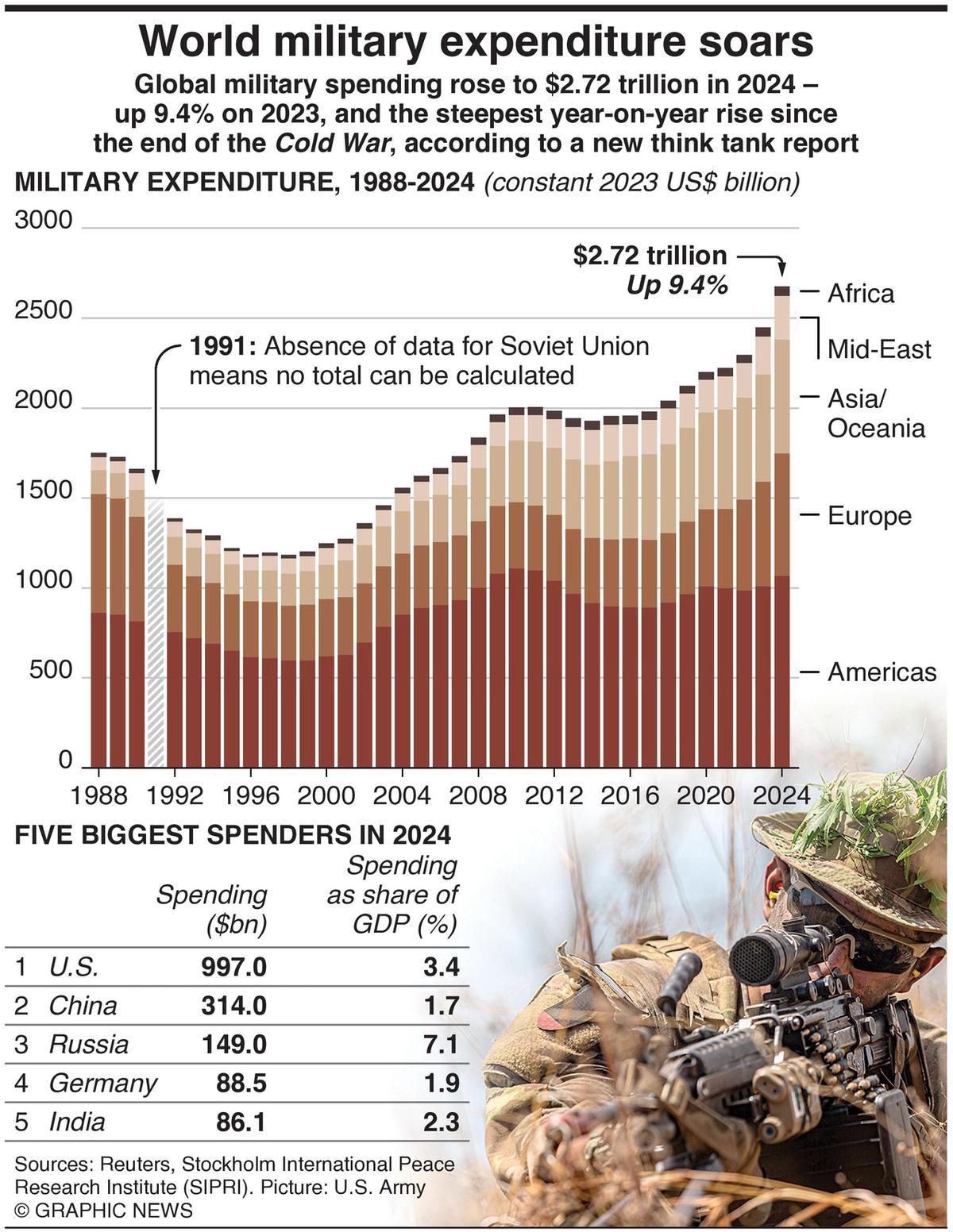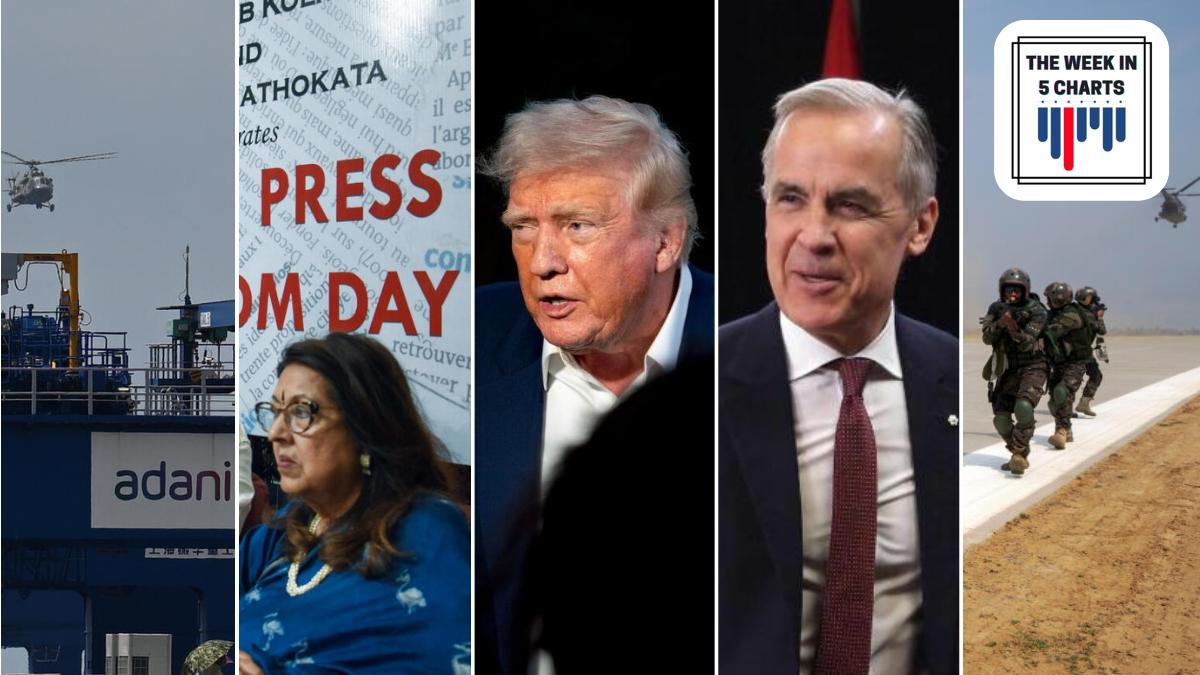(1) Donald Trump celebrates 100 days in office
U.S. President Donald Trump spent his first 100 days issuing a blitz of executive orders to deliver rapidly on campaign pledges, drastically downsize the government and reshape America’s role on the global stage.
Donald Trump promised on Tuesday (April 29, 2025) that he is just getting started as he marked the radical and vengeful beginning of a presidency that has shaken the world and destabilized the United States.
Basking in the adulation of cheering supporters in Michigan, the 78-year-old touted the “most successful first 100 days of any administration in the history of our country,” even as polls show Americans becoming disenchanted with the economic and political tumult.
Trump has shaken up the United States like few presidents before him. His billionaire backer Elon Musk has led dramatic cutbacks of the federal workforce, and the president himself has reshaped relations with the world by unveiling sweeping tariffs, berating allies and eliminating much foreign aid.

Polls show that the honeymoon period that Americans historically accord presidents at the start of their terms has evaporated for Trump, who has angrily dismissed the results, but has tacitly acknowledged that he must moderate some policies as stock market turmoil takes a toll.
(2) Liberal Party wins the Canadian Federal Elections
Canadian Prime Minister Mark Carney’s Liberal Party won Canada’s federal election on Monday (April 28, 2025), capping a stunning turnaround in fortunes fueled by U.S. President Donald Trump’s annexation threats and trade war.
In a victory speech before supporters in Ottawa, Mr. Carney stressed the importance of Canadian unity in the face of the threats coming from Washington. He also reiterated a belief he shared while campaigning: that the mutually beneficial system Canada and the U.S. had shared since World War II had ended. “We are over the shock of the American betrayal, but we should never forget the lessons,” he said.
However, the Liberals, who won 169 of 343 seats, fell short of the majority by 3 seats of winning an outright majority in the Parliament. Pierre Poilievre-led Conservatives secured 144 seats, followed by the Bloc Québécois, a separatist party from French-speaking Quebec that seeks independence from Canada, who won 22 seats.
Both, the Liberals and the Conservatives secured their highest vote share since 2008, with the former securing 43.7% of the vote share, as compared to the Conservatives 41.3%. In the previous federal elections, the Justin Trudeau’s Liberals secured a 32.6% vote share, while the Conservatives secured 33.7%.
(3) India 5th largest military spender: SIPRI
India’s military spending in 2024 was nearly nine times that of Pakistan’s expenditure, according to a study released on Monday (April 28, 2025) by a leading Swedish think-tank that comes amid growing tensions between the two countries over the Pahalgam terror attack.
The country’s military expenditure, the fifth largest globally, grew by 1.6% to $86.1 billion while Pakistan spent $10.2 billion, according to the Stockholm International Peace Research Institute (SIPRI).
The top five military spenders — the United States, China, Russia, Germany and India — accounted for 60% of the global total, with combined spending of $1,635 billion, it said.

Several countries in central and western Europe saw unprecedented rises in their military expenditure in 2024 as they implemented new spending pledges and large-scale procurement plans, SIPRI said.
It said Germany’s military expenditure increased by 28% to reach $88.5 billion, making it the biggest spender in central and western Europe and the fourth biggest in the world. Poland’s military spending grew by 31% to $38 billion in 2024, representing 4.2% of the country’s GDP, according to SIPRI.
(4) World Press Freedom Index: India ranks 151st
On May 3, 2025 the world marked Press Freedom Day, an event that seeks to honour, and reinforce, the commitment of nations to a free and robust media. Just a day before, on May 2, Reporters Without Borders (Reporters sans Frontières- RSF) released the Press Freedom Index, its annual ranking of the status of journalistic freedom in 180 countries worldwide. While Norway tops the chart, Eritrea, under a dictatorship, scores the lowest rank. India places at a dismal 151.
India’s press freedom is in crisis, according to the RSF Index. Violence against journalists, ownership of media being concentrated in the hands of a few, and increasing political polarisation are some reasons for its rank of 151. It also notes that the media landscape is highly dependent on advertising revenue— the primary source for which is the Indian government.
China fares poorly at 178, and so does Afghanistan, which finds itself, at 175, among the bottom ten countries in the index. Per the RSF website, more than two-thirds of Afghan journalists left the profession since 2021, including eight out of every 10 women. Bangladesh ranked 149th in this year’s edition of the World Press index, up from 165 last year. Myanmar is at rank 169, up three steps from its 171 ranking in 2024. The military coup of 2021 stymied progress towards greater freedom after the previous coup in 2011.
Pakistan, at 158, has slid down from a ranking of 152 last year. Maldives (104), Nepal (90), and Sri Lanka (139) have fared better than India, according to the index, but conditions remain far from ideal. Nepal is the only one of India’s neighbours to notch a double digit rank.
(5) Vizhinjam seaport commissioned
The Vizhinjam seaport in Kerala, positioned to be India’s first major transshipment hub, was formally commissioned by Prime Minister Narendra Modi on Friday (May 2, 2025). Built at a cost of over eight thousand crores, the port is set to reduce India’s dependence on foreign ports for transshipment of Indian cargo to their final destinations.
Transshipment is the process of large container vessels docking at larger ports, from where the cargo is transferred to smaller vessels to be shipped to the final port. India’s cargo is transshipped mostly from foreign ports in Colombo and Singapore. This meant longer travel times and higher costs.
Vizhinjam’s proximity to the east-west corridor shipping lane, and its natural depth of 20m (avoiding dredging costs) give it an edge compared to previous transshipment initiatives like that in Cochin.

However, Vizhinjam is not the first transshipment initiative. Recent initiatives include the operational Vallarpadam port in Cochin, and planned ports in Tamil Nadu, and the Galathea Bay in Andaman and Nicobar islands.
The growth of such transshipment hubs depends on factors like inland connectivity, efficient port operations, natural depth and capacity utilisation, many of which have become issues with Vallarapadam port. For instance, dredging costs to keep the port’s depth at 14.5 m have crossed ₹100 crore annually. Traffic at the container terminal, too, has not reached the benchmark of 1 million TEUs.
Published – May 05, 2025 12:35 pm IST
